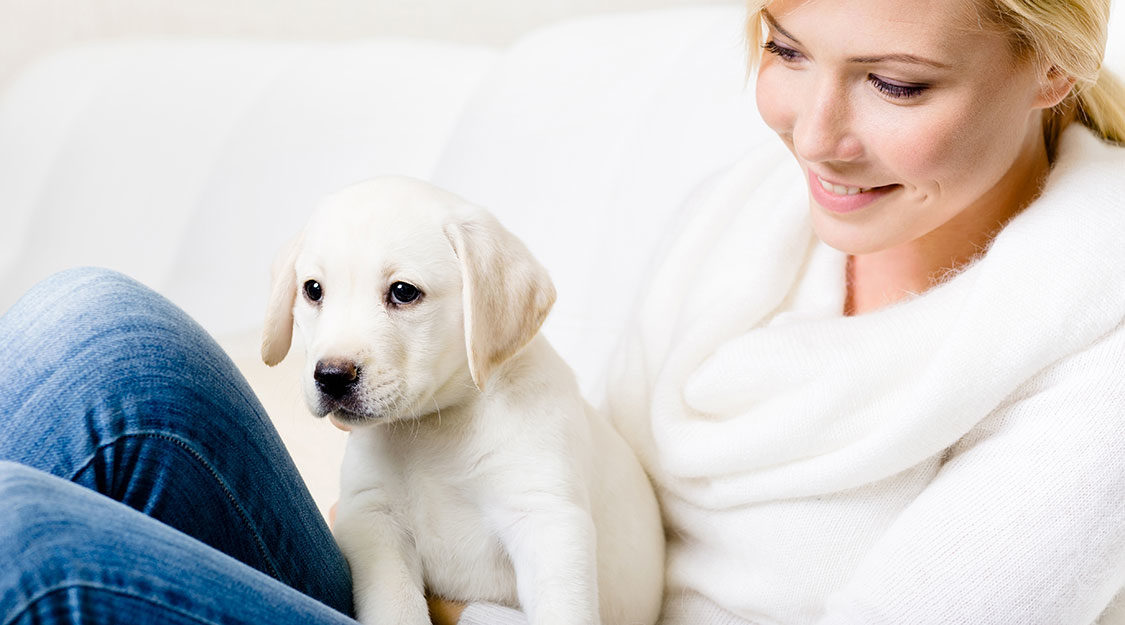How to train your puppy in 6 easy steps
If you have just brought home the most beautiful, sweetest, smartest puppy in the world and are now falling in love with its soulful eyes and happy, wagging tail, you have no doubts about it that just everyone you know is going to fall in love with her as well.
Regardless of how cute and innocent your puppy is to you at this moment, you should however bear closely in mind that all the joy that you’re now experiencing could turn into a nightmare for both you, your family and your friends if you don’t start with proper puppy training from the very start.
The good news is that training your puppy can be a lot of fun if you follow the appropriate dog training rules and if have the correct information and guidance to achieve your goals.
The six main parts of any effective dog training will you’ll have to master are:
Leadership
The most important thing that you will have to take care of when training a puppy is to establish your role as leader and to teach your puppy the rules & boundaries that you want to establish inside and outside the house. This will include teaching your dog which parts of your house he can access and which areas he’s not allowed to access. For instance, if you don’t want to allow your dog inside the kitchen, then you will gently, but firmly move her out of the kitchen each times she trespasses the kitchen boundary. Remember that you are the leader and that you are the one who is making the rules in the house, rules which should remain unaltered regardless of how pitiful your puppy’s eyes may look at you.
Routine
Puppies need routine in their lives, like children do. Feed your puppy at the same times each day. Take her outside at the same time and have her sleep in the same place each night.
Routines offer the vital structure that puppies can count and which helps them to behave calm and feel secure.
Consistency
It is important that everyone follow the same rules in the house. Puppies can get confused and manipulative if one person insists on good manners and another person allows jumping and nipping. Raising a puppy is a family affair and everyone in the family should agree to adopt certain rules and apply them consistently.
Crate training
There are many methods to train your puppy to only go to the bathroom outside, but most dog trainers agree that crate training is the best method for housebreaking your puppy.
Crate training takes advantage of the puppy’s natural instinct that tell it to keep her den clean. Keeping her confined to a crate during certain times will help her gain bladder and bowel control because she will hold her business in order to keep her area clean. The crate thus not only keeps your puppy confined whenever appropriate, but also serves as the perfect training tool for housebreaking your puppy.
Housebreaking
The most important thing is to give your puppy plenty of chances to go the bathroom outside. Again, establish a routine when housebreaking. As soon as she has eaten, take her outside and supervise her eliminating. Praise her enthusiastically when she has taken care of her business. Don’t be embarrassed; a few minutes of goofy dog-talking can make a life-time of good canine habits.
Keep in mind that it can take months for a puppy to fully gain control of her body, so be patient. And never punish a puppy if there’s an accident inside the house. Remember that she is still a baby and in learning mode. Just clean up the accident and move on.
Nipping and biting
Puppies are naturally mouthy; they use their mouths and teeth to explore and play, including exploring your hands and feet. It may be cute when they are tiny, but as your puppy grows, her nipping and biting will soon become much less entertaining.
When it comes to training your puppy to stop biting and nipping, you will also have to set firm boundaries and be consistent just as with crate training and potty training. Try redirecting your puppy’s energy and firmly keep saying no when she nips or bites.
Obedience training
The last step to take is to teach your puppy what NOT. Don’t worry excessively about ‘Sit’, ‘Stay’, ‘Fetch’ or ‘Bring me the newspaper’, but first work on establishing leadership, consistency, routine and boundaries as an initial roadmap to effectively train your puppy to be obedient. When it is time for more formal training, this will come easier because you have created a foundation of trust.
